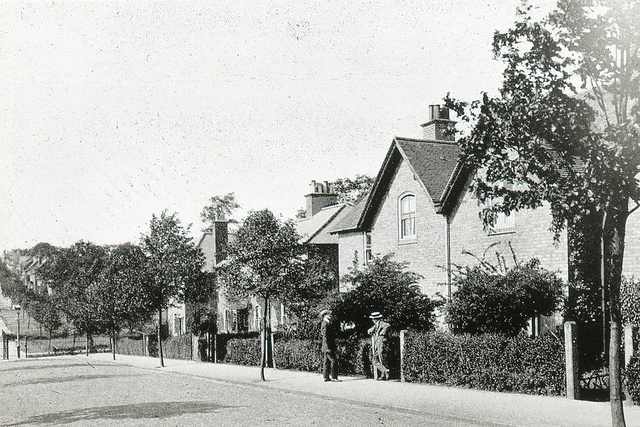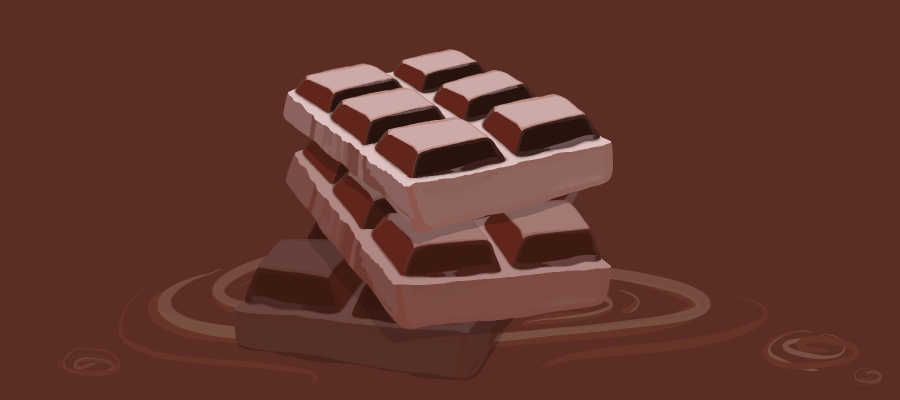Inspired by the book, "Chocolate Wars", by Deborah Cadbury, today we're telling you the incredible true story of how the biggest chocolate companies in the world fought for our tummies and tastebuds through innovation after innovation that eventually turned cocoa products from a drink, to an edible chocolate, to a milk chocolate powder, and finally, to our beloved milk chocolate bar.
In the 1860s and 1870s, Cadbury experimented with, and successfully created, the first mass-manufactured chocolate bar. Milk chocolate bars did not yet exist at this time, so it would have been a plain dark chocolate bar. This was a big breakthrough. The fact that these bars could be mass-produced meant that they could be more affordable, so more people could buy it and try it. By the 1890s, everyone in Britain was buying cocoa products - it was no longer just an exotic treat for the rich. In the decade from 1890 to 1900, the amount of cocoa consumed in Britain was doubled.
Over in Switzerland, around the same time that Cadbury had managed to mass-produce their plain chocolate bar, Daniel Peter was working on making the world’s first milk chocolate powder. Daniel Peter happened to be neighbors with Henri Nestlé of Nestlé fame. According to one story, Daniel had a baby daughter, named Rose, who wouldn’t take breast milk. He asked his neighbor, Henri, for help, because he knew that Henri had just started selling a powdered milk developed for babies. So baby Rose was saved, because she could drink Henri Nestlé’s powdered milk. At the same time, her father, Daniel, got the idea to use the powdered milk to create a milk chocolate powder, which did not exist at the time (although people were already drinking cocoa powder with milk, so they would have been familiar with the flavor). In 1875, Daniel succeeded in making the world’s first milk chocolate powder - it was called “Chocolats au Lait Gala Peter”. It was a success! He thought about making his drink into a chocolate bar...a milk chocolate bar. After years of working to create a milk chocolate bar, Daniel finally created one he could sell - he called it “Gala Peter”. The year was 1886. This was no easy feat by the way - he had to figure out how to handle milk in bulk in a time before refrigeration.
Elsewhere in Switzerland, at around the same time, another important chocolate innovation was happening. Rodolphe Lindt, of Lindt chocolate fame, created a much smoother chocolate after pressing the beans for longer than the norm. He experimented with different temperatures and timings to get as much cocoa butter folded into his mix as possible. This created a delicious melt-in-your-mouth chocolate. (Even today, Lindt chocolates are known to be silky smooth.) He invented a machine called “a conch” because it looked like a conch shell. Chocolate bars used to be hard and gritty, but now they could be softer and smoother.
So what we’re seeing at this time is more and more people getting into the business of cocoa, and working hard and innovating to get ahead.

Now, back in Britain, Cadbury’s innovations made them very successful. As Quakers, George and Richard Cadbury wanted to use their money to create an ideal place for their employees to work. In 1878, they bought the idyllic land for their model factory that would be surrounded by nature. The factory was a manufacturing marvel. It was built to be one-storey tall, so that goods would not have to go up and down stairs. They built cottages and gardens around it, with spaces to play sports or relax. They called the model town "Bournville", and Bournville would be the inspiration for model towns to come. Including, the town of Hershey, which we’ve done an episode on.
At around this time in the 1870s, young Milton Hershey was still in Philadelphia trying to make his candy shop successful.
In England at that time, the Quaker-led chocolate companies dominated. The 3 Quaker companies, Fry, Cadbury, and Rowntree, were all powerhouses. But they were all being threatened by European competition. You can imagine it must have been hard to compete with Lindt’s smooth chocolate and Peter’s milk chocolate coming out of Switzerland. So the Quaker firms discussed pricing and advertising with one another, essentially working together not to destroy each other. Cadbury had to figure out how to make a product that could compete with Swiss chocolate. After a trip to Switzerland, and much experimentation, George Jr. created a chocolate bar you may have heard of - it was Cadbury’s Dairy Milk, and it launched way back in 1905. That means Dairy Milk has been around for over one hundred years.
The First World War really levelled out the chocolate playing field. The big British Quaker companies, including Cadbury, had to withdraw their best products. The Swiss, including Nestlé, were very impacted because their home market was small and they had relied on selling across Europe and abroad, but exporting had become dangerous. The solution was to borrow a ton of money and invest in companies overseas. This left them with a lot of debt.
In America, Hershey was not affected by the First World War. And soon after the war, another chocolate contender surfaced in America alongside Hershey. It was Mars, which used to be called the Mar-O-Bar Company. They created the Milky Way, which launched in 1924 and made Frank Mars’s Mar-O-Bar Company a success. The Milky Way was a really smart creation. Instead of making a bar of solid chocolate (which would have cost more to make), the Mar-O-Bar Company made a product which was simply coated with chocolate. Frank Mars and his son, Forrest Mars, built a new factory and went on to launch Snickers and 3 Musketeers bars. In 1933, the father and son had a fight over how to run the business. Forrest Mars got the European rights to the Milky Way recipe, and turned it into the Mars Bar. He actually used Cadbury's milk chocolate as the coating.
After WWI, Cadbury had to worry about competition from foreign companies like Nestlé again. They had become more efficient after experiencing war-time rationing, and they knew they needed to use their efficiency to make and sell products more cheaply. They also knew that they needed to make fewer types of chocolate and focus on mass-producing key products. Soon after WWI, they launched Flake (1920), Cadbury’s Fruit and Nut bar (1926) which I love, and the original cream-filled chocolate egg (1923) which would eventually become today’s iconic Cadbury Creme Egg (1963). Like Cadbury, the other chocolate companies rolled out fantastic new chocolate bars in the post-WWI period. In the 1930s Forrest Mars came out with Maltesers. Then Rowntree came out with tons of innovations like - Chocolate Crisp (which was eventually named Kit Kat), and also Aero, and Smarties!
Special Thanks to Our Interviewee:
Deborah Cadbury - author of "Chocolate Wars"

